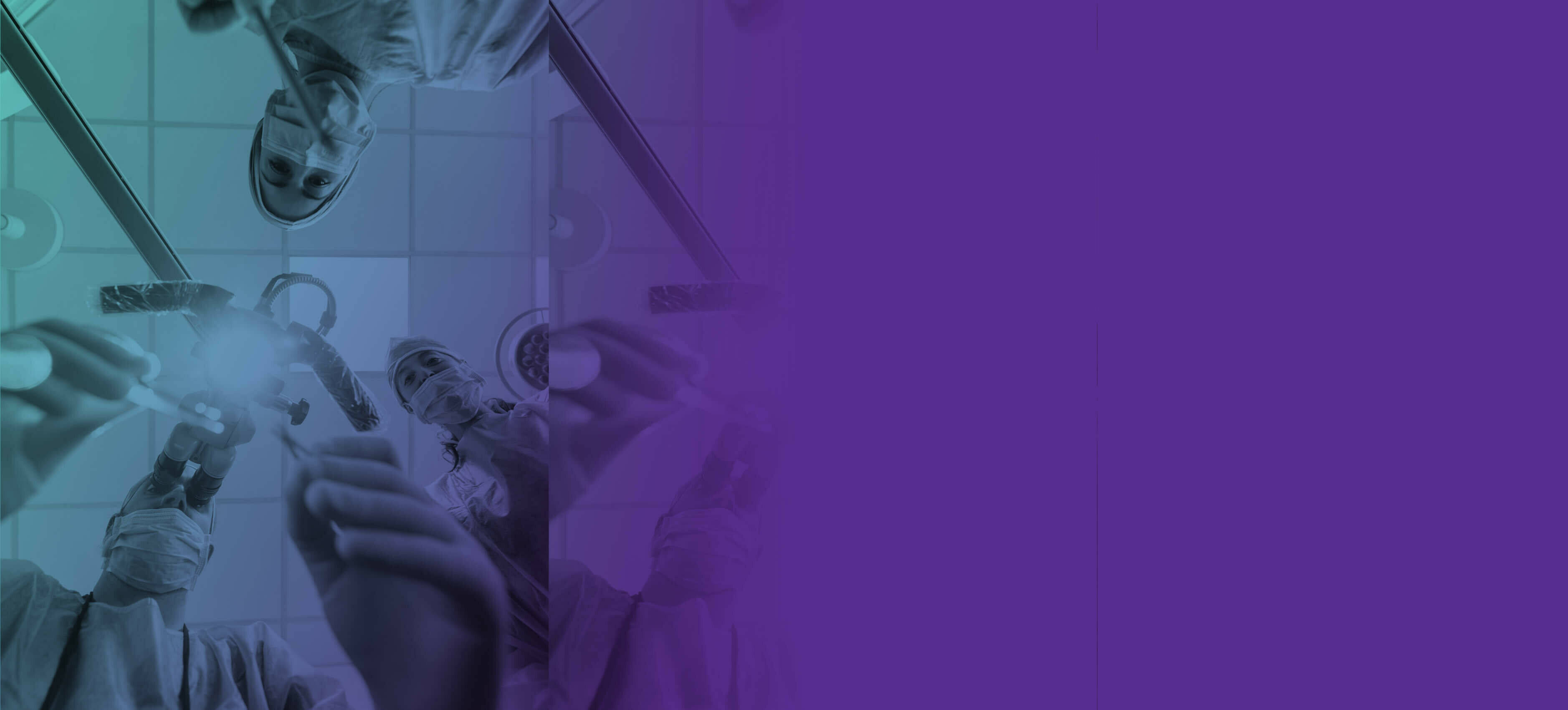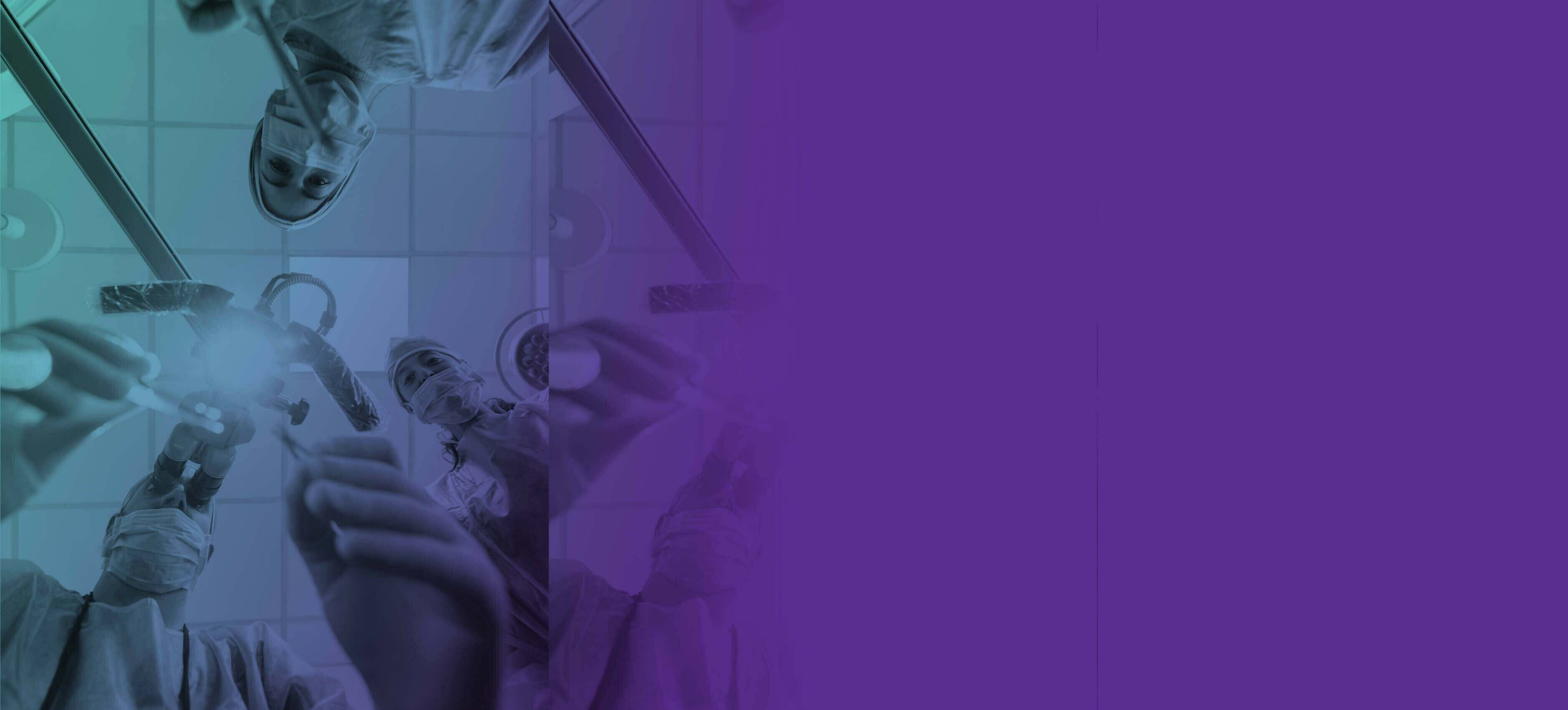
In the following chapters of this e-book, we will show you how Proximus supports the digital transformation of the Belgian healthcare sector on a daily basis. Read on to find out how we take care of the continuous connectivity of your network, first and foremost.

2
Automation of administrative tasks

3
Empowering the patient

1
Innovative strength and entrepreneurship in challenging times

chapter 1 – challenges
Current opportunities in healthcare
Maar wat leveren die data nu concreet op? De tweede horde die maakbedrijven nemen, is die data op een overzichtelijke en efficiënte manier aan de medewerkers presenteren.
Guy De Winne (ST Engineering): “De voorbije jaren verzamelden we heel wat data, maar die zat verspreid over verschillende databases, zowel vanuit de productie en machines als uit de ondersteunende diensten. We wilden ervoor zorgen dat alle informatie gecentraliseerd werd in één datacube met verschillende views. Zodat elke medewerker vlot de juiste informatie voor zijn functie uit die centrale database kan halen.”
This system of mutual interaction and data sharing between caregiver and patient allowed care to adapt quickly during the pandemic, resulting in the mass use of remote care and apps. However, there is still a lot of work to be done to break through the current data silos of care institutions and enable broad 'data sharing' between all stakeholders within a secure cybersecurity environment. For example, partners from the healthcare industry could use this (anonymized) information in clinical studies and other pioneering scientific research.
This digital transformation is in full swing and is largely made possible by the underlying innovations in ICT and the long-standing reliability of existing telecom networks.
Quality care is also care that is supported by both healthcare provider and patient. The connection between the two provides confidence in a world where the medical profession is increasingly under attack. Partly due to the emergence of patient-centric platforms, such as the medical record, healthcare users, these days, have direct access to their health data and can engage in constructive dialogue with their healthcare provider.
- Access to such a central hub of information puts more responsibility in the hands of the patient, and they are directly involved in where, when and how certain tests, consultations, etc. will take place.
- The direct integration of telecare and monitoring within the same platform completes the picture.
At the same time, the system links all the healthcare organizations involved around the user, so that they always have access to all the relevant information, as and when needed.
In addition to cooperation across care institutions, the key to quality healthcare is also largely in the hands of the healthcare personnel themselves. That is why it is crucial that they can spend as much time as possible on primary care tasks.
Shifting and automating certain administrative tasks frees up professional time for caregivers so that they can focus on more complex care. This can range from the preparation of timetables and booking appointments to the intake of new patients. For example, according to research by Voka (download only available in Dutch language), nurses now spend a third of their time on non-nursing tasks, a figure that could certainly be reduced through technological innovation.
This will allow each healthcare professional to focus their time on the most complex tasks, in line with training and experience. This not only increases productivity and quality, but also makes more room for personal contact with patients. Moreover, this task shift can boost the attractiveness of the various care professions on the labor market.
Major technological leaps have been made in recent years thanks to the entrepreneurship of the Belgian care sector. Fortunately, researchers and doctors were able to build on the incredible strengths within welfare, healthcare companies and knowledge centers to do this.
The importance of science, innovation and technology has only become more apparent during the coronary crisis. Both in the field of diagnostics and prevention, as well as e-health, mental health care and cooperation across the borders of healthcare institutions.
COVID-19 changed everything
IT and technology have never been more important in healthcare than they are today. That is one of the many things that COVID-19 has made clear. Healthcare was completely reorganized in record time and IT systems and support also passed a critical test, including making the hybrid workplace immediately and massively accessible to as many functions as possible.
Just as the rest of the economy will not return to `business as usual’ after the pandemic, our healthcare industry will emerge transformed.
The combination of an ageing population, healthcare budgets under constant pressure and a (chronic) shortage of medical personnel: these are the ingredients for a 'perfect storm'.
chapter 1
Technology offers an answer to many of these challenges but, at the same time, it struggles with obstacles of its own:
- The lack of an adequate budget for IT and knowledge in the industry
- Variation in systems and technical maturity
- Doubts about reliability and safety
At the same time, there is a whole list of digital opportunities that can improve patient care and the work of care workers. By combining telecom, IT and innovative technologies, support throughout the care process can be greatly improved.
It is therefore high time that all stakeholders in the sector work together as much as possible to raise our care to an even higher level.







In the following chapters of this e-book, we will show you how Proximus supports the digital transformation of the Belgian healthcare sector on a daily basis. Read on to find out how we take care of the continuous connectivity of your network, first and foremost.


This system of mutual interaction and data sharing between caregiver and patient allowed care to adapt quickly during the pandemic, resulting in the mass use of remote care and apps. However, there is still a lot of work to be done to break through the current data silos of care institutions and enable broad 'data sharing' between all stakeholders within a secure cybersecurity environment. For example, partners from the healthcare industry could use this (anonymized) information in clinical studies and other pioneering scientific research.
This digital transformation is in full swing and is largely made possible by the underlying innovations in ICT and the long-standing reliability of existing telecom networks.

Quality care is also care that is supported by both healthcare provider and patient. The connection between the two provides confidence in a world where the medical profession is increasingly under attack. Partly due to the emergence of patient-centric platforms, such as the medical record, healthcare users, these days, have direct access to their health data and can engage in constructive dialogue with their healthcare provider.
- Access to such a central hub of information puts more responsibility in the hands of the patient, and they are directly involved in where, when and how certain tests, consultations, etc. will take place.
- The direct integration of telecare and monitoring within the same platform completes the picture.
At the same time, the system links all the healthcare organizations involved around the user, so that they always have access to all the relevant information, as and when needed.

In addition to cooperation across care institutions, the key to quality healthcare is also largely in the hands of the healthcare personnel themselves. That is why it is crucial that they can spend as much time as possible on primary care tasks.
Shifting and automating certain administrative tasks frees up professional time for caregivers so that they can focus on more complex care. This can range from the preparation of timetables and booking appointments to the intake of new patients. For example, according to research by Voka (download only available in Dutch language), nurses now spend a third of their time on non-nursing tasks, a figure that could certainly be reduced through technological innovation.
This will allow each healthcare professional to focus their time on the most complex tasks, in line with training and experience. This not only increases productivity and quality, but also makes more room for personal contact with patients. Moreover, this task shift can boost the attractiveness of the various care professions on the labor market.

IT and technology have never been more important in healthcare than they are today. That is one of the many things that COVID-19 has made clear. Healthcare was completely reorganized in record time and IT systems and support also passed a critical test, including making the hybrid workplace immediately and massively accessible to as many functions as possible.
Just as the rest of the economy will not return to `business as usual’ after the pandemic, our healthcare industry will emerge transformed.
COVID-19 changed everything
Major technological leaps have been made in recent years thanks to the entrepreneurship of the Belgian care sector. Fortunately, researchers and doctors were able to build on the incredible strengths within welfare, healthcare companies and knowledge centers to do this.
The importance of science, innovation and technology has only become more apparent during the coronary crisis. Both in the field of diagnostics and prevention, as well as e-health, mental health care and cooperation across the borders of healthcare institutions.
Current opportunities in healthcare

Technology offers an answer to many of these challenges but, at the same time, it struggles with obstacles of its own:
- The lack of an adequate budget for IT and knowledge in the industry
- Variation in systems and technical maturity
- Doubts about reliability and safety
At the same time, there is a whole list of digital opportunities that can improve patient care and the work of care workers. By combining telecom, IT and innovative technologies, support throughout the care process can be greatly improved.
It is therefore high time that all stakeholders in the sector work together as much as possible to raise our care to an even higher level.
The combination of an ageing population, healthcare budgets under constant pressure and a (chronic) shortage of medical personnel: these are the ingredients for a 'perfect storm'.

chapter 1